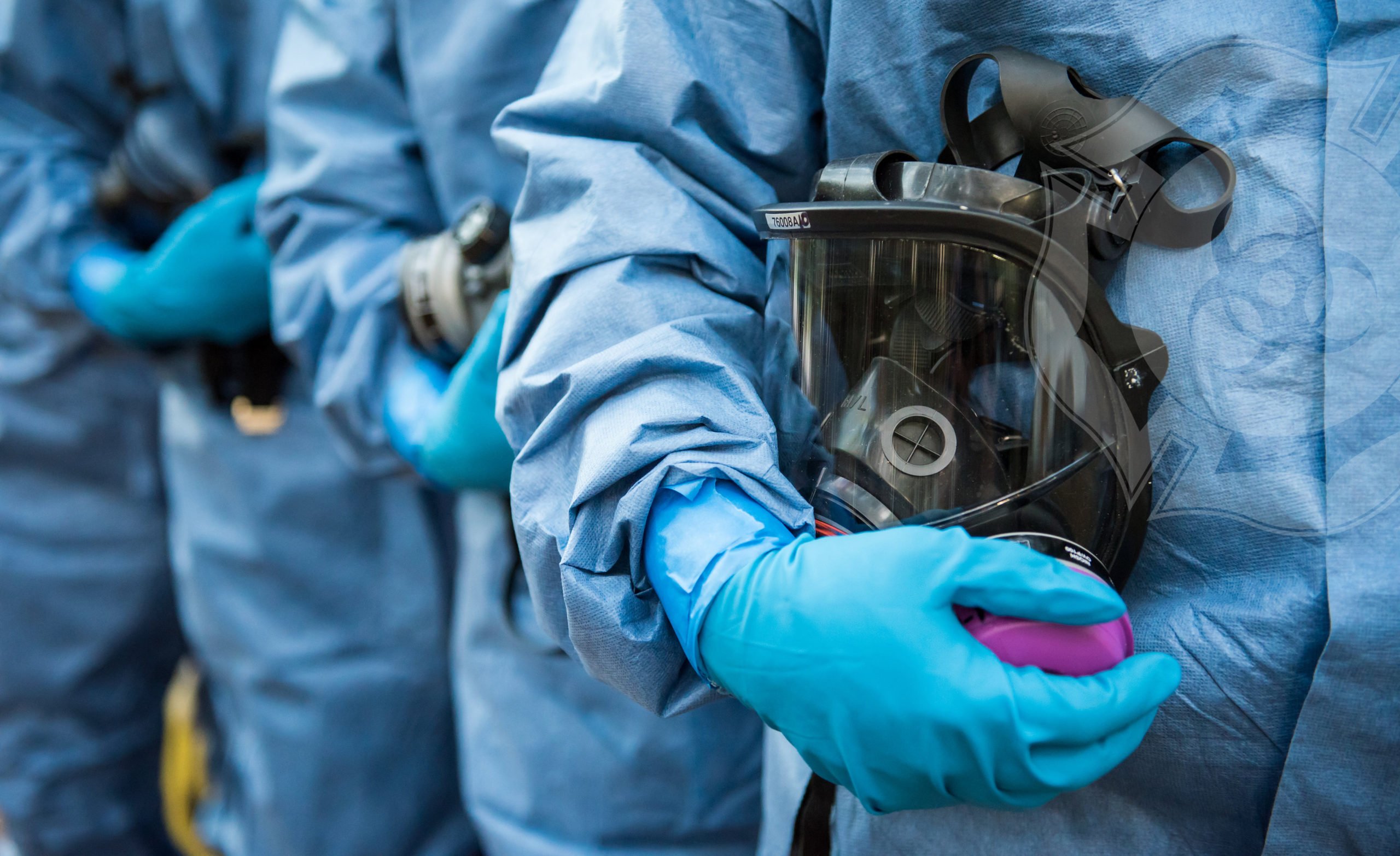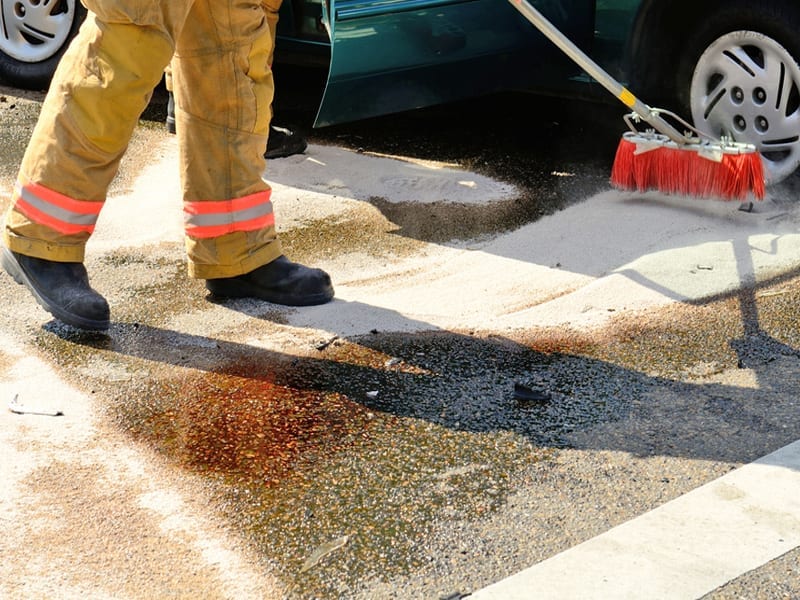Decomposition Death Clean Up: Specialized and Respectful Remediation
Wiki Article
Professional Biohazard Cleansing and Purification for Blood, Bodily Fluids, and Hazardous Products
The possible health threats linked with direct exposure to biohazards highlight the critical requirement for careful handling and comprehensive clean-up. As we browse the intricate landscape of biohazard cleanup, comprehending the subtleties of regulations, compliance, and the specific tools at play comes to be vital in making certain a risk-free and complete decontamination process.
Wellness Threats of Biohazard Direct Exposure
Exposure to biohazards positions considerable health and wellness threats that can result in severe consequences for individuals and areas alike. Biohazards incorporate a wide range of biological compounds, consisting of blood, physical fluids, mold and mildew, germs, infections, and various other possibly transmittable products. When people enter into contact with these biohazards, whether with mishaps, incorrect handling, or ecological direct exposure, they deal with the danger of having significant ailments or conditions.Among the key health risks connected with biohazard direct exposure is the transmission of infectious conditions. Bloodborne virus such as HIV, liver disease B and C, and different germs can be present in biohazardous materials, posing a straight hazard to human health. Breathing in air-borne biohazards like mold spores or coming into contact with infected surface areas can likewise lead to respiratory concerns, allergic reactions, and other adverse wellness impacts.
Moreover, biohazard direct exposure can have long-lasting wellness effects, with some conditions materializing years after the first get in touch with (Blood Cleanup). For that reason, it is critical to prioritize correct biohazard cleansing and purification to mitigate these health threats and guarantee the safety and security of areas and individuals

Specialized Educating for Biohazard Cleanup
When it pertains to taking care of biohazard cleanup effectively and securely, specialized training plays a basic role in guaranteeing appropriate purification treatments are adhered to. Biohazard cleanup requires certain expertise and abilities to effectively mitigate risks connected with bloodborne microorganisms, physical liquids, and unsafe products. Professionals trained in biohazard cleanup undergo extensive direction on exactly how to safely manage, eliminate, and dispose of biohazardous materials to avoid contamination and exposure.Specialized training for biohazard cleanup covers a variety of essential topics, consisting of correct individual safety devices (PPE) use, bloodborne microorganism understanding, purification methods, and contaminated materials disposal protocols. Individuals learnt biohazard cleaning are outfitted with the needed expertise to analyze contamination degrees, determine prospective risks, and implement appropriate cleaning treatments in compliance with regulatory criteria.
Continual training and education are critical in the area of biohazard cleaning to remain updated on the most up to date purification innovations, safety methods, and guidelines. By buying specialized training, biohazard cleanup specialists can efficiently respond to emergency situation cleanup scenarios and secure both public health and the setting.
Value of Proper Purification Techniques
Making use of appropriate purification methods is crucial in biohazard clean-up to effectively remove dangerous products and reduce wellness risks. Reliable decontamination not only makes certain the removal of noticeable traces of blood, bodily liquids, and various other biohazards however additionally targets undetectable pathogens that might pose severe wellness risks otherwise correctly gotten rid of. By following rigorous decontamination procedures, trained specialists can considerably minimize the threat of exposure to hazardous microbes, infections, and bacteria that might cause infections or conditions.Appropriate purification strategies entail using specialized devices and anti-bacterials that are especially designed to neutralize biohazards successfully. Comprehensive cleansing and sanitation of infected areas are important to stop the spread of virus and make certain a secure setting for occupants. Additionally, the correct disposal of biohazardous waste following decontamination procedures is important in stopping contamination of other surfaces or individuals.

Tools and Tools for Safe Cleanup
When dealing with blood, physical fluids, or harmful products, biohazard cleaning experts count on specialized gear to reduce direct exposure threats and visit this page thoroughly decontaminate the afflicted location. Additionally, biohazard cleaning sets having disinfectants, absorptive products, and biohazard bags are used to safely get rid of and contain of polluted products.Advanced cleansing devices like hospital-grade anti-bacterials, HEPA-filtered vacuums, and fogging devices are employed to sterilize surfaces and eliminate biohazards effectively. Specialized tools such as sharps containers and biohazard garbage disposal bins are utilized to safely manage sharp items and biohazardous waste materials. By using the ideal tools and web devices, biohazard cleansing professionals can guarantee an extensive cleaning procedure that focuses on safety and security and decreases wellness threats for both employees and owners of the damaged room.
Rules and Conformity in Biohazard Cleansing
Appropriate adherence to laws and conformity requirements is extremely important in biohazard cleansing to make sure the security of both workers and the environment. Government agencies such as OSHA (Occupational Safety and Wellness Management) and the EPA (Environmental Security Company) have established certain standards for biohazard cleanup procedures to decrease wellness dangers and environmental contamination. These regulations cover an array of aspects consisting of the handling, transport, and disposal of biohazardous materials, as well as the essential training and safety equipment needed for employees included in the cleanup procedure.Biohazard cleaning companies must remain updated with these regulations to guarantee that their procedures satisfy the required safety and security requirements. Failure to adhere to these policies can result in extreme effects, including fines, lawful action, and jeopardizing the health and wellness of individuals and the atmosphere. By following rigorous policies and conformity steps, biohazard cleansing business can properly minimize dangers and ensure a safe and comprehensive cleanup procedure for all parties included.
Conclusion
To conclude, biohazard cleansing and purification call for specialized Your Domain Name training, correct strategies, and adherence to laws. Exposure to blood, physical fluids, and dangerous products positions substantial health and wellness dangers, making it vital to utilize the ideal equipment and devices for secure clean-up. By following stringent protocols and standards, experts can successfully reduce the risks connected with biohazard exposure and make certain the security of both themselves and others.
As we navigate the complex landscape of biohazard cleaning, understanding the nuances of policies, compliance, and the specific devices at play ends up being important in making sure a secure and detailed decontamination process. (Blood Cleanup)
When it comes to managing biohazard cleaning effectively and securely, specialized training plays a basic duty in making certain correct purification treatments are complied with.Using appropriate purification techniques is vital in biohazard cleanup to efficiently minimize and remove unsafe products health and wellness risks. Additionally, biohazard cleansing sets including disinfectants, absorptive products, and biohazard bags are made use of to securely dispose and contain of infected items.
Federal government companies such as OSHA (Occupational Security and Health Administration) and the EPA (Environmental Protection Firm) have established details guidelines for biohazard cleanup treatments to decrease health and wellness risks and ecological contamination.
Report this wiki page